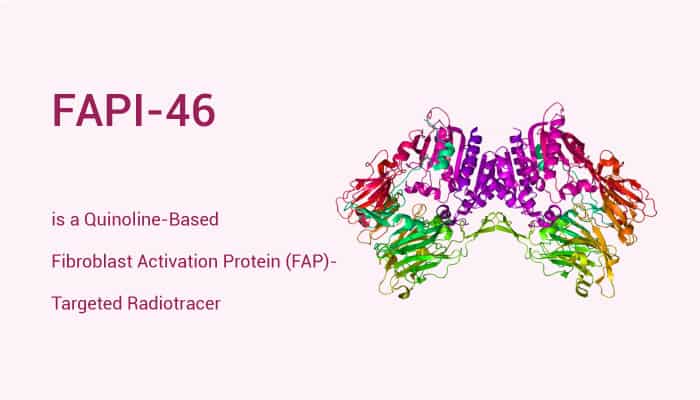The proline-selective serine protease fibroblast activation protein (FAP) is a type II transmembrane glycoprotein. It is related to the dipeptidyl peptidases (DPPs) DPP2, DPP4, DPP8 and DPP9 and furthermore related to the endopeptidase prolyl oligopeptidase (PREP). FAP combines DPP and endopeptidase activities. FAP is not detectable in most healthy adult tissues and therefore considered non-essential under normal circumstances. However, it is clearly expressed in pathophysiological lesions, characterized by tissue remodeling. Such lesions are in, e.g., cancer, atherosclerosis, arthritis, and several fibrosis types. There is growing evidence that CAFs have a regulatory role in tumor biology and extracellular matrix composition. FAP+-CAFs are present in the stromal tissue of more than 90% of epithelial carcinomas, including pancreatic, colon, ovarian, lung, and breast cancer. In this study, FAPI-46 is a FAP-targeted radiotracer. FAPI-46 has higher tumor uptake and prolonged tumor accumulation.

FAPI-46 (1-24 h) robustly binds to human FAP in human FAP-expressing HT-1080 cells. Especially, FAPI-46 improves tumor-to-organ ratios, resulting in enhanced image contrast for PET imaging. Depending on the tumor type, tumor accumulation could be significantly prolonged by the tracer FAPI-46.
In summary, FAP is a member of the serine protease family. More than 90% of epithelial tumors, including pancreas, colon, breast, and ENT (ear, nose, and throat) carcinomas express it in the microenvironment. FAPI-46 displays good tumor-to-blood, tumor-to-muscle, and tumor-to-liver ratios. All in all, FAPI-46 is a FAP-targeting molecule and a radiotracer. It has higher tumor uptake and prolonged tumor accumulation. FAPI-46 has the potential for the tumor imaging of a multitude of different cancers.
Reference:
Loktev A, et, al. J Nucl Med. 2019 Oct;60(10):1421-1429. Moon ES, et, al. EJNMMI Radiopharm Chem. 2020 Jul 29;5(1):19.